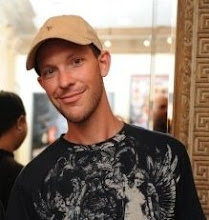
Saturday, December 4, 2010
On Collecting: John & Dominique de Menil- the buildings
On Collecting Art: Eli & Edythe Broad
 White Squad V, 1984
White Squad V, 1984
Leon Golub
And Thus... (present tense), 1996
Kara Walker
As their collecting matured, they began to explore the growing accessiblilty of contemporary art, always keeping an eye on its relavance to the mirror of the social outlook of the modern Los Angeles context.
Away From The Flock, 1994
Damien Hirst
Untitled (for Leo Castelli), 1977
Donald Judd
Actual Size, 1962
Ed Ruscha

Untitled (Your body is a battleground), 1989
Barbara Kruger
Recently, the Broads have completed construction on The Broad Contemporary Art Museum at the Los Angeles County Museum of Art designed by Renzo Piano. Their collection represents some of the greatest "blue chip" artwork available in the Contemporary Art world and receives worldwide recognition as such.

Tulips, 1995-2004, and Balloon Dog (Blue), 1994-2000
Jeff Koons
On Collecting Art: Duncan Phillips
 The Repntant St. Peter, c. 1600-1605
The Repntant St. Peter, c. 1600-1605El Greco
 Deer In The Forest, 1913
Deer In The Forest, 1913Franz Marc

Phillips was ambitious in his appreciative endeavours of art. In the 1920's he pursued collecting, founding a museum, and art criticism. The results were are rich contribution to American scholarship and a national treasure trove of important paintings and scultptures.
For Phillips, the collection and the writing existed in a symbiotic relationship- verbalized aesthetic ideas as counterparts of the visual perceptions that initiated a profound movement adding insight and sympathy for pictorial and decorative art that continues to be a sincere, inspiring gift.
"I bring together congenial spirits among the artists from different parts of the world and from different periods of time and I trace their common descent from old masters who anticipated modern ideas. ...Thus I demonstrate two things-- the antiquity of modern ideas [and] the modernity of some of the old masters, and I prove... that art is the universal language which defies classification according to any chronological or national order" -Phillips Collection In The Making















